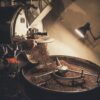Ah, the aroma of freshly brewed coffee in the morning. For many of us, it’s the perfect way to start the day. But have you ever wondered what goes into making that perfect cup of coffee? It’s not just about the beans or the brewing method; it’s about the science behind coffee extraction. In this article, I will take you on a journey to understand the art of coffee extraction, how it works, and how you can achieve the perfect cup every time.
Understanding the science behind coffee extraction
Coffee extraction is the process of extracting the desirable flavors and compounds from coffee grounds by passing water through them. It is a delicate balance between extracting the right amount of flavor compounds and avoiding over-extraction, which can result in a bitter and unpleasant taste. To understand coffee extraction, we need to delve into the science behind it.
During the extraction process, water acts as a solvent, dissolving the soluble compounds in coffee grounds. These compounds include acids, sugars, oils, and other flavor compounds. The rate and degree of extraction depend on various factors, such as grind size, water temperature, brew ratio, and brewing methods. Each factor plays a crucial role in determining the final taste and quality of the coffee.
Factors that affect coffee extraction
To achieve the perfect cup of coffee, it is essential to understand the factors that affect coffee extraction. These factors include grind size, water temperature, brew ratio, and brewing methods. Let’s explore each factor in detail.
Grind Size: The size of the coffee grounds has a significant impact on extraction. Finer grind sizes increase the surface area of the coffee particles, allowing for faster and more efficient extraction. On the other hand, coarser grind sizes result in slower extraction, producing a lighter and milder cup of coffee.
Water Temperature: The temperature of the water used for brewing also affects extraction. Hotter water extracts more flavor compounds, resulting in a bolder and more robust cup. However, water that is too hot can lead to over-extraction and a bitter taste. Finding the right water temperature is crucial for achieving the perfect balance of flavors.
Brew Ratio: The brew ratio refers to the ratio of coffee grounds to water used in brewing. It determines the strength and concentration of the final cup. A higher brew ratio produces a stronger cup, while a lower ratio results in a milder taste. Experimenting with different brew ratios can help you find the perfect balance that suits your taste preferences.
Brewing Methods: Different brewing methods, such as pour-over, French press, espresso, or drip coffee, also impact coffee extraction. Each method has its own set of variables, such as water flow rate, extraction time, and pressure, which affect the final taste and quality of the coffee. Understanding the nuances of each brewing method allows you to optimize coffee extraction according to your preferences.
The role of grind size in coffee extraction
Grind size is one of the most critical factors in coffee extraction. It determines the rate at which water interacts with the coffee grounds and extracts flavor compounds. The right grind size ensures optimal extraction, resulting in a well-balanced and flavorful cup of coffee.
When coffee beans are ground, they are broken down into smaller particles with a larger surface area. Finer grind sizes have more surface area, allowing water to penetrate more easily and extract flavor compounds. This leads to a faster extraction process and a bolder cup of coffee.
On the other hand, coarser grind sizes have less surface area, resulting in a slower extraction. This can be beneficial for certain brewing methods that require longer extraction times, such as cold brew. Coarser grind sizes also tend to produce a milder and less acidic cup of coffee.
To determine the right grind size for your preferred brewing method, you need to consider the extraction time, water flow rate, and desired flavor profile. For example, espresso requires a fine grind size to achieve a short extraction time and a concentrated flavor. French press, on the other hand, requires a coarse grind size to accommodate the longer extraction time and produce a fuller-bodied cup.
Water temperature and its impact on coffee extraction
Water temperature plays a crucial role in coffee extraction. It affects the rate and degree of extraction, as well as the overall flavor profile of the coffee. Finding the right water temperature is essential for achieving the perfect cup.
Hotter water extracts more flavor compounds from the coffee grounds, resulting in a bolder and more robust cup of coffee. The ideal water temperature for most brewing methods is between 195°F (90°C) and 205°F (96°C). This range allows for optimal extraction without risking over-extraction and bitterness.
However, it’s important to note that different brewing methods may require slight variations in water temperature. For example, espresso typically requires a higher temperature, around 200°F (93°C), to account for the shorter extraction time and the need to extract flavor quickly. On the other hand, pour-over or drip brewing may benefit from slightly lower temperatures, around 195°F (90°C), to achieve a smoother and less bitter taste.
Finding the right water temperature for your preferred brewing method may require some experimentation. Start with the recommended temperature range and adjust accordingly based on your taste preferences. Remember that water that is too hot can result in over-extraction and a bitter taste, while water that is too cold may lead to under-extraction and a weak cup of coffee.
The importance of brew ratio in coffee extraction
The brew ratio, or the ratio of coffee grounds to water, is a crucial factor in coffee extraction. It determines the strength and concentration of the final cup, as well as the overall balance of flavors. Finding the right brew ratio is essential for achieving the perfect cup of coffee.
A higher brew ratio, such as 1:15 or 1:16 (coffee to water ratio), produces a stronger and more concentrated cup of coffee. This ratio is commonly used for espresso or darker roasts, where a bold and intense flavor is desired. On the other hand, a lower brew ratio, such as 1:18 or 1:20, results in a milder and more balanced cup, often preferred for lighter roasts or pour-over brewing.
Experimenting with different brew ratios allows you to fine-tune the strength and flavor of your coffee according to your preferences. Keep in mind that the brew ratio also affects the extraction process. A higher ratio may require a longer extraction time to fully extract the desirable flavors, while a lower ratio may result in a quicker extraction. Adjusting the extraction time accordingly ensures optimal flavor extraction and balance.
Brewing methods for optimizing coffee extraction
Different brewing methods offer unique ways to optimize coffee extraction and achieve the perfect cup. Let’s explore some popular brewing methods and their impact on extraction.
Pour-Over: Pour-over brewing, such as the V60 or Chemex, involves manually pouring hot water over coffee grounds in a filter. This method allows for precise control over water flow rate and extraction time. By adjusting the pouring technique and timing, you can optimize extraction and achieve a well-balanced cup with enhanced clarity and acidity.
French Press: French press brewing involves steeping coffee grounds in hot water and then pressing a plunger to separate the grounds from the liquid. This method allows for a longer extraction time and a fuller-bodied cup. By adjusting the steeping time and grind size, you can control the strength and flavor profile of the coffee.
Espresso: Espresso brewing utilizes high pressure to extract flavor compounds from finely ground coffee. This method results in a concentrated and intense cup of coffee. By adjusting variables such as grind size, extraction time, and water temperature, you can fine-tune the extraction process to achieve the desired flavor profile.
Drip Coffee: Drip coffee machines automate the brewing process by spraying hot water over coffee grounds in a filter. This method offers convenience and consistency. By selecting the appropriate grind size and adjusting the water flow rate, you can optimize extraction and achieve a well-balanced cup.
Experimenting with different brewing methods allows you to explore different flavors and find the one that suits your taste preferences. Each method offers unique variables that can be adjusted to optimize extraction and achieve the perfect cup.
Common mistakes in coffee extraction and how to avoid them
Even with a good understanding of coffee extraction, it is easy to make mistakes that can negatively impact the quality and taste of your coffee. Here are some common mistakes to avoid:
Over-Extraction: Over-extraction occurs when coffee grounds are in contact with water for too long or when the water temperature is too high. This can result in a bitter and unpleasant taste. To avoid over-extraction, ensure you use the correct brew ratio, adjust the extraction time, and use the appropriate water temperature for your preferred brewing method.
Under-Extraction: Under-extraction occurs when coffee grounds are not in contact with water for long enough or when the water temperature is too low. This can result in a weak and sour taste. To avoid under-extraction, ensure you use the correct brew ratio, adjust the extraction time, and use the appropriate water temperature for your preferred brewing method.
Inconsistent Grind Size: Inconsistent grind size can lead to uneven extraction, resulting in a cup of coffee with varying flavors and strengths. Invest in a good quality grinder and ensure you achieve a consistent grind size for optimal extraction.
Poor Water Quality: The quality of water used for brewing can greatly impact the taste of your coffee. Avoid using tap water with high mineral content or strong flavors. Instead, opt for filtered or bottled water to ensure a clean and neutral base for extraction.
By avoiding these common mistakes and focusing on the key factors that affect coffee extraction, you can significantly improve the quality and taste of your coffee.
Experimenting with different variables for personalized coffee extraction
Coffee extraction is not a one-size-fits-all process. It is a journey of exploration and experimentation to find the perfect cup that suits your taste preferences. By adjusting variables such as grind size, water temperature, brew ratio, and brewing methods, you can personalize your coffee extraction and create a unique flavor profile.
Start by experimenting with one variable at a time. For example, try adjusting the grind size and observe how it affects the taste and strength of your coffee. Then, move on to adjusting the water temperature and explore the impact it has on flavor extraction. By systematically experimenting with different variables, you can understand their individual effects and how they interact with each other.
Keep a record of your experiments, noting down the variables and their corresponding results. This will help you track your progress and fine-tune your coffee extraction process over time. Remember that personal taste preferences vary, so don’t be afraid to deviate from the recommended guidelines and explore your own unique brewing style.
Conclusion: Mastering the art of coffee extraction
Coffee extraction is a delicate science that requires an understanding of the various factors that influence the taste and quality of your cup of coffee. By delving into the art of coffee extraction, understanding the science behind it, and experimenting with different variables, you can master the art of brewing the perfect cup every time.
Remember to consider factors such as grind size, water temperature, brew ratio, and brewing methods to optimize extraction. Avoid common mistakes and focus on achieving a well-balanced and flavorful cup of coffee.
So, the next time you brew your favorite cup of coffee, take a moment to appreciate the art of coffee extraction that goes into creating that perfect sip. Experiment, explore, and enjoy the journey of discovering your personalized coffee extraction style. Cheers to the perfect cup of coffee!




